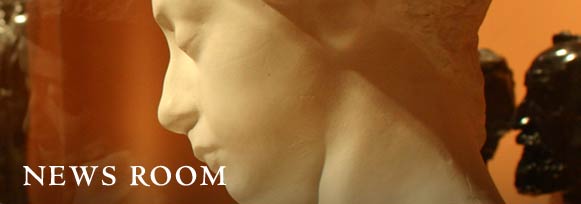Exhibition Focuses on Conservation and Attribution of Renaissance Painting
August 4—November 28, 2004
Stanford, CA, April 20, 2004—The Cantor Arts Center at Stanford University presents "Finding Sellaio: Conserving and Attributing a Renaissance Painting." This exhibition, on view August 4 – November 28, 2004, reveals how modern analytical technologies, which provide evidence unavailable to the unaided eye, enhance traditional art historical research methods. This case study focuses on the panel painting Virgin and Child with Saint John (c. 1480–85) and the attribution of this devotional object to the Florentine artist Jacopo del Sellaio (ca. 1441–1493).
"Finding Sellaio" demonstrates what may be learned about a work of art through a series of technical investigations, such as infrared reflectography, X-radiography, and paint sample analysis undertaken during the conservation of the work of art. These analytical tools provide useful data about the artist’s technique and materials. This information augments stylistic analysis, an approach developed during the late 19th century that commonly serves art historians as the primary tool for determining the authorship of undocumented or unsigned paintings. Traditional stylistic analysis had led some art historians to identify Filippino Lippi as the artist; others attributed the work to Lippi’s older contemporary Jacopo del Sellaio. Because both artists had similar training, were both influenced by Botticelli, and employed similar techniques, uncertainty remained.
This exhibition explores how this contested attribution has been resolved through data obtained during the conservation process. It also provides the visitor with insight into the conservation process itself.
The newly conserved painting will be displayed together with infrared images that reveal the telltale underdrawing, x-ray images that expose its structure, and microphotographs of significant paint samples. A display of Renaissance painting materials and a comparative painting by Sellaio on loan from the Fine Arts Museums of San Francisco provide visitors with an opportunity to consider for themselves the evidence for the attribution.
"Finding Sellaio" complements the Center's large, experimental project "Question," on view July 14-January 2. While "Question" deals with art issues from visitors' points of view, "Finding Sellaio" vividly illustrates the question of attribution — "Who made this?" — as posed and analyzed by curators and conservators.
Admission to the Cantor Arts Center and to its exhibition is free. This exhibition is made possible by members of the Cantor Arts Center and by the Jane B. Miller Fund.
VISITOR INFORMATION Cantor Arts Center is open Wednesday – Sunday from 11 a.m. to 5 p.m., Thursday until 8 p.m. Admission is free. The Center is located on the Stanford University campus off Palm Drive, at Museum Way. Call 650-723-4177 for information about exhibitions in 24 galleries, the Rodin Sculpture Garden, contemporary sculpture across campus, the art in the Center's extensive collection, plus lectures, gallery talks, tours, and symposia.


